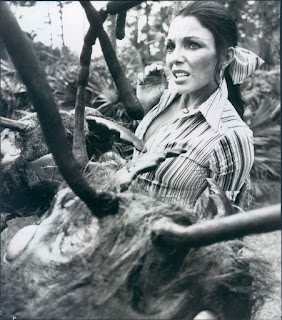Opening this weekend:
Ant-Man—With the Marvel movies of the past few years, maybe the more obscure the source comics—obscure to me, at least—the more interesting the film. Guardians of the Galaxy turned out to be one of the more amusing big-budget flicks from last year, and this summer’s Ant-Man is possibly even a bit more fun.
Ant-Man, whose major superpower is the ability to shrink himself to ant size, originated in 1962 as the star of a recurring feature in Marvel’s Tales to Astonish and later, as an original member of The Avengers. Initially the alter-ego of the haunted genius Hank Pym—and paired with the Wasp, his similarly diminutive lady love and fellow Avenger—the micro-superhero has gone through several changes of secret identity over the decades, but obviously never attained the mythic stature of Spider-Man or The Hulk or Iron Man.
The film takes up the story with the aging Pym (Michael Douglas) turning over the Ant-Man suit and mantle to high-tech burglar Scott Lang (Paul Rudd), in hopes that Scott will help him foil the schemes of Pym’s mad protégé Darren Cross (Corey Stoll). Cross has a suit of his own that turns him into the super-villian Yellowjacket, who can also, as Steve Martin would say, get small. Pym’s enlistment of Scott is over the objections of his daughter Hope (Evangeline Lilly), who would prefer to be the agent against Yellowjacket.
In outline, it’s standard superhero stuff, but the film was made, thankfully, by a bunch of goofballs. The director is Peyton Reed, who made the terrific 2000 cheerleader comedy Bring It On, the script was by Joe Cornish of the terrific Attack the Block and Edgar Wright of the terrific Shaun of the Dead, with star Rudd and Adam McKay also contributing to the writing. The dialogue keeps mischievously deflating the corny tropes of the genre, and Reed maintains a light-footed pace and serves up one imaginative gag after another, deftly shifting from Ant-Man’s epic perspective on his surroundings to a normal-sized perception of their dinkiness and back, to often hilarious effect, like a screwball, primary colored, Saturday morning cartoon version of The Incredible Shrinking Man.
Ant-Man also has the power to command actual ants of various species—winged carpenter ants he can ride, bullet ants to attack his enemies and the like. After a childhood spent repeatedly watching Them! I’ve always been a little phobic about ants, but Ant-Man succeeds in making them endearing (Parents and sensitive viewers should be warned [spoilers!]: one of Ant-Man’s loyal ant pals pays the ultimate price, and also that an adorable lamb gets disintegrated in the course of the story).
These sweet ants gave the movie a sour postscript for me—as I left the screening, I called home to ask my wife if she needed anything, and she told me, I’m not kidding, to stop at the supermarket and pick up some ant traps; our kitchen had been invaded. I did it, but I didn’t like doing it.
Lila & Eve—Lila (Viola Davis) is a single mom in Atlanta who has lost her elder son Stephon to a stray bullet in a drive-by. The police have no leads, and aren’t looking very hard for any. At a support group for grieving mothers Lila strikes up a conversation with Eve (Jennifer Lopez), who agrees to be her sponsor. But Eve’s sponsorship is a little different—she and Lila go on a killing spree, targeting the drug dealers responsible for Stephon’s death.
The result is a thriller that sweeps us past its more implausible aspects with its swift pace and the nice, unforced rapport of the two leads. It has a central plot twist that may not come as much of a surprise to audiences—I figured it out about forty-five minutes in, and I’m pretty slow with that sort of thing. It also has, at its core, a beautiful, wrenching performance, which cracks the movie’s conventional dramatics.
Not many actresses now in American film can do grief like Viola Davis. With zero showy histrionics, she gets across Lila’s soul-shattered agony, horrifyingly faced with the dull requirement to keep slogging on through life. The glimpses we get of her immediate reaction to the tragedy are so raw that they’re difficult to watch, but later, Lila even shows flickers of humor and pleasure, which seem, in the context of her loss, heroic.
It’s magnificent acting, and it throws
Lila & Eve off balance—Davis gives us too much complexity in Lila, too much fatalistic awareness of the futility of her revenge, for us to fully enjoy the movie as a lurid melodrama in the
Death Wish vein. Yet Davis is also, by a large margin, the best thing about
Lila & Eve, and its only real claim on our emotions. Her performance wrecks the movie, and makes it worth seeing.



















